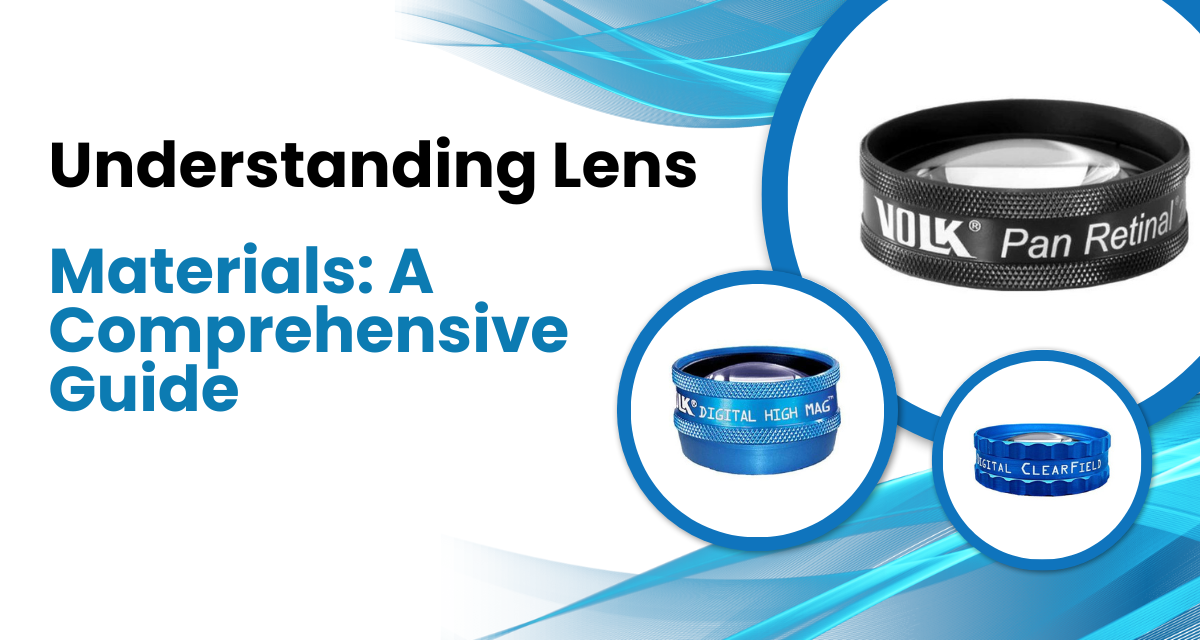Are you pondering over the intricacies of lens materials used in ophthalmic lenses? The world of ophthalmic lenses is evolving at an astonishing pace, with advancements in materials playing a pivotal role in enhancing visual acuity and comfort for patients. Understanding these materials is key to making informed choices about eye care. Let’s delve into the diverse world of lens materials and their impact on vision correction.
Material Varieties
The realm of ophthalmic lenses spans a spectrum of materials, each with unique properties and benefits. Here are some commonly used materials:
1. Glass Lenses:
-
Historical Foundation: Once the primary choice for lenses due to its clarity, glass lenses have now been overshadowed by newer materials.
-
Optical Purity: Glass offers exceptional optical clarity, making it suitable for specific applications despite being relatively heavier.
2. Plastic Lenses:
-
High Impact Resistance: Polycarbonate and Trivex lenses have gained popularity due to their robustness and lightweight nature.
-
Safety Assurance: These materials are often preferred for safety eyewear due to their shatter-resistant properties.
3. High-Index Plastic Lenses:
-
Reduced Thickness: High-index plastics provide increased refractive indexes, allowing for thinner and lighter lenses, especially for stronger prescriptions.
-
Aesthetic Appeal: The reduced lens thickness offers cosmetic advantages, making them appealing for those concerned about lens thickness.
4. Photochromic and Polarized Lenses:
-
Adaptive Technology: These lenses adapt to varying light conditions, transitioning from clear indoors to dark outdoors (photochromic) or reducing glare from reflective surfaces (polarized).
5. Aspheric Lenses:
-
Enhanced Visual Quality: These lenses have a flatter, slimmer profile compared to traditional spherical lenses, minimizing visual distortions and peripheral aberrations.
Material Selection and Vision Needs
Choosing the right lens material is essential, primarily based on individual vision requirements, lifestyle, and comfort. For instance:
-
Prescription Strength: Stronger prescriptions often benefit from high-index materials, reducing the thickness and weight of the lenses.
-
Activity-based Choices: Polycarbonate lenses might be preferred for sports due to their impact resistance, while polarized lenses could be ideal for outdoor enthusiasts.
-
Fashion and Comfort: Those looking for thinner lenses for cosmetic purposes might opt for high-index materials, balancing aesthetics with vision correction.
Website Reference to Explore Further
For an in-depth understanding of these materials and their applications in ophthalmic lenses, visit Volk’s Ophthalmic Lenses Page. Volk offers a comprehensive range of lenses crafted from various materials to cater to diverse visual needs.
Conclusion
In the world of ophthalmic lenses, the choice of material holds substantial significance in achieving optimal visual correction and comfort. The evolving landscape of materials caters to an array of vision needs, allowing individuals to make informed decisions about their eye care. Understanding these materials empowers patients and eye care professionals alike in selecting the most suitable lenses for diverse visual requirements.
Exploring the world of lens materials is a journey toward clearer, more comfortable vision. Whether it’s considering impact resistance, lightweight options, or adapting to changing light conditions, the right choice of lens material can significantly enhance the visual experience.
For more information on the latest advancements in ophthalmic lenses and an extensive selection of materials, visit volks opthalimic lenses page and take a step toward a clearer, brighter world of vision.
















